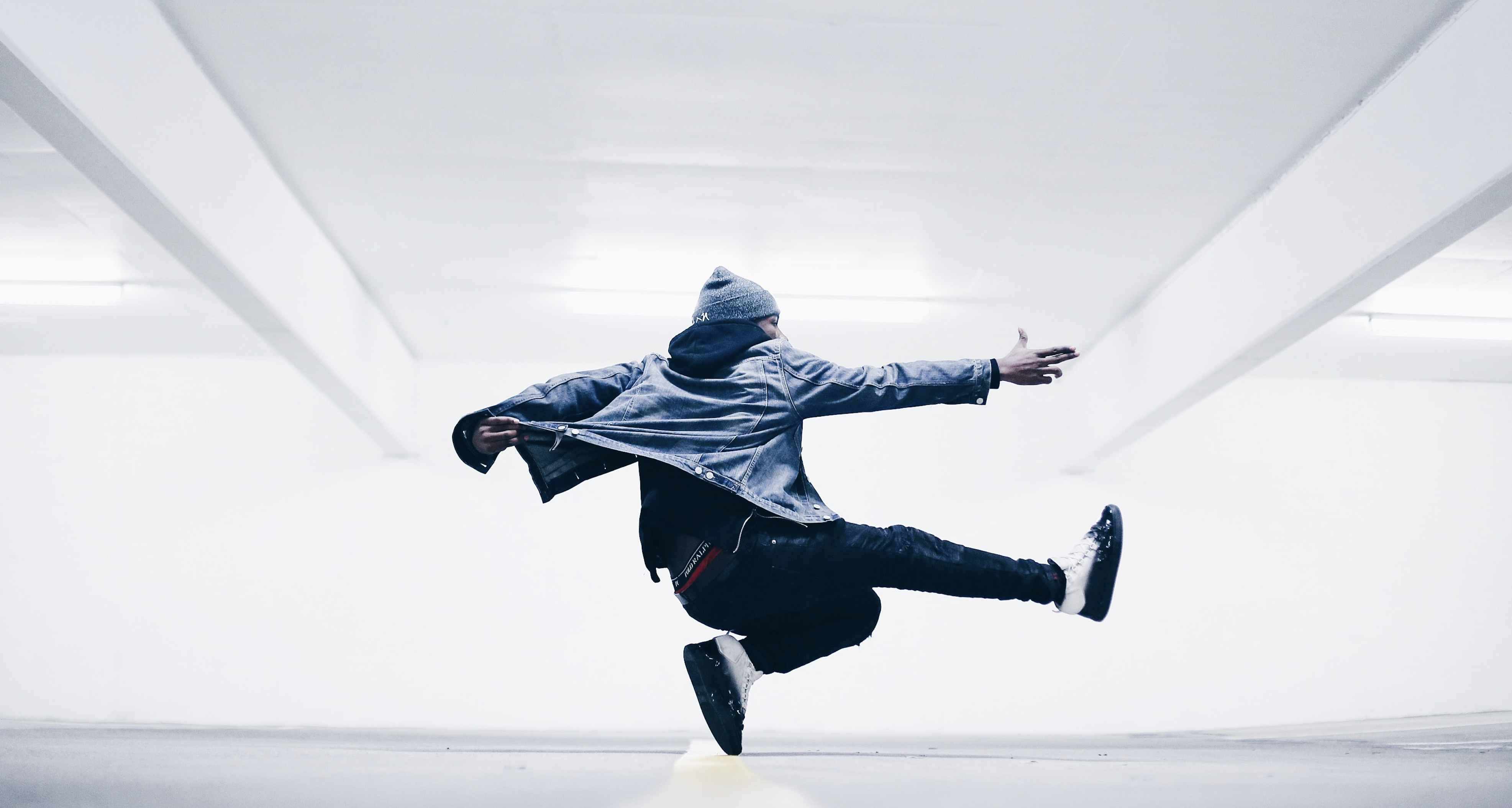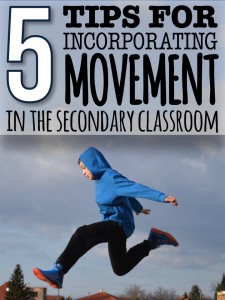Movement in the Classroom

Incorporating movement and physical activity into the classroom is a great way to keep students engaged and focused, and helps to stave off boredom. In primary school, students are often moving regularly, yet when they get to secondary school we seem to expect them to sit still for extended periods whilst still retaining focus. Below are five ways in which I try to keep my students moving in class.
1. Between activities, have students stand up and move around.
This can be as simple as having students shake out their limbs, or do some jumping jacks and then sit down again – it needn’t take more than a minute. However, it will get the blood flowing and students will return to their work with a fresh perspective and renewed energy. I often try to do this at the midpoint of the lesson.
2. You as the teacher should move around.
One of the worst things you can do as a teacher is spend the entirety of every lesson seated at your desk. Now, I am not suggesting that you pace incessantly like a ravenous tiger, but do try to gently move around the classroom during the lesson. This serves three purposes: it will keep you awake and on your feet; it will force students’ gaze to move and thus keep them alert; it will help you to keep an eye on students and gauge their responses from different vantage points.
3. When doing paired work, instruct students to get out of their chairs and move across the room to find a partner with whom to pair up.
Often when doing paired work, I say, “Turn to the person next to you”. However, if occasionally you ask students to get out of their chairs and find someone across the room to work with for the lesson, it forces them to work with different peers and expends a little energy. Of course, this does take a little longer and so I don’t do it every time and would only do so for meaningful paired work which will take the majority of the lesson to complete.
4. Pass a ball around for when a person is speaking.
Yes, this is very Lord of the Flies, but it really does work – especially for the junior classes. I was once struggling with students shouting out of turn and so brought in a soft beach ball. The rule was: you only speak while holding the ball. The kids loved this as passing the ball around was a game in itself, and it really did help with the speaking out of turn issue. What’s more, I found kids more regularly wanting to answer a question or give their opinion, as they were eager to catch and throw.
5. Plan meaningful group activities which involve movement.
There are plenty of these, but here are a few examples:
- Put the class into groups and have a stack of questions on your desk. One student from each group has to get up and come to the desk for a question, then return to their group to work out the answer. Once they have the answer, they bring it to you at your desk and if it is correct, they collect a new question.
- Have different workstations around the room for students to work on and rotate around. In the English classroom, some might be writing tasks, others may be reading activities, others grammar work etc.
- Complete group activities and then have students come up to the front and present their work to the rest of the class.
Obviously I don’t do all of these, all the time. As with most things, the element of surprise and a break with routine is important, so do vary the types of movement and regularity.
I would love to hear how you involve movement in your lessons and whether or not you find it effective.

Randi
I wholeheartedly agree movement keeps student engaged in the learning process. One of my students’ favorite activities is a Musical Peer Review. Students place writing pieces on their desks, and when the music begins, they move in an organized fashion around the classroom. Once the music stops, students will take a seat at the closest desk to peer review. Each round has a specific objective to analyze based on teacher’s discretion. Before students realize it, they have analyzed, edited, revised, etc. by demonstrating great excitement in the learning process.
staceylloyd
RandiWhat a great activity; I love it! Thanks for sharing.
Kevin Shephard
Guidelines/resources for brain breaks and class based activities http://www.supportrealteachers.org/brain-breaks-and-class-based-activities.html
Ways to incorporate other subject matter into physical education and links to more resources http://www.supportrealteachers.org/how-to-make-physical-education-cross-disciplinary.html
12 Links All Secondary Teachers Need | Arizona K12 Center
[…] Just because they’re older doesn’t mean they should be chained to their desks! Engage your big kids with these five tips for incorporating movement in the secondary classroom. […]
Cole Greek
Hello Stacy Lloyd! My name is Cole Greek and I am a current student studying Elementary Education at the University of Nebraska at Kearney. I love these ideas for integrating classroom movement. One in particular I would use is number 4, since students would be able to answer by catching the ball and others should listen respectfully. All of these ideas I will take into consideration for when I become an elementary teacher. You had mentioned not to use all of these too often, but still use these to get your classroom to get physically moving around to wake them up. If you were to give any advice to for a new teacher to be, what advice could you give to me on classroom movement to get students to be more positive and excited to be in the classroom and be involved.